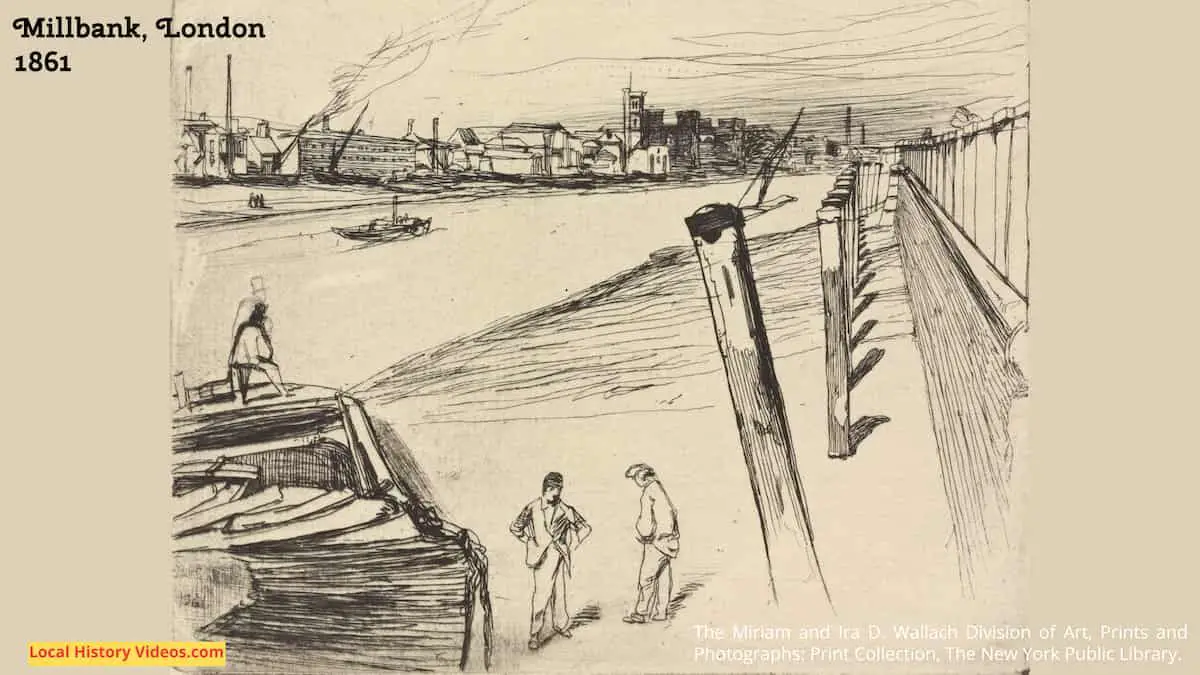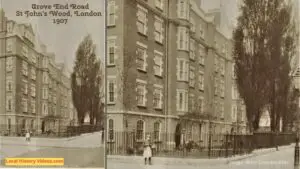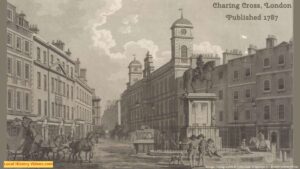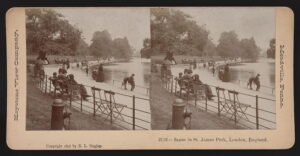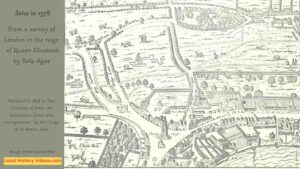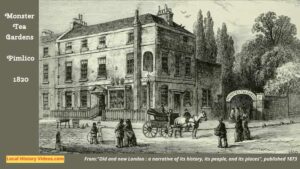Glimpse history through old images of Millbank, London, England, UK.
Millbank is in the City of Westminster, part of London. The area’s name comes from Westminster Abbey’s watermill, which was still there during a survey of 1573. Throughout the medieval period it was a rural place, full of bogs, quagmires and plague pits, known commonly as Tothill Fields.
Bomb Shelters, 1939
Families with an income lower than £5 a week were to receive one of these shelters for free.
Bomb proof shelters at Millbank for civilians (1939) – British Pathé on YouTube
Millbank Pre-fab Showhome, 1944
Britain’s first factory produced showhouse was displayed in Millbank in 1944. Winston Churchill had promised half a million of these pre-fabricated homes, usually called pre-fabs, to be installed as temporary housing.
Bombing meant a widespread housing shortage. Some homeless families had husband and fathers serving overseas, who would themselves need somewhere to live when World War II eventually ended.
The prototype showhome included a living fireplace also providing heated air for two bedrooms, and built in cupboards. Internal fittings were limited to £80.
There were no stairs and no complicated finishes, so it would be cheaper to build than a conventional home.
Married women working for the Ministry of Works had been allowed to contribute to the design, helping anticipate some of the practical aspects of living in these homes. We might ask whether they were listened to, however, since the design ignored any need for clothes to be washed. The solution had to be ‘fixing a small copper’ in the bathroom, and there didn’t seem to be any answer about where to dry the clothes.
On the upside, the tiny kitchen was a modern fitted design, much more attractive and practical than the majority of homes had to work with. Even better, it had a refrigerator!
Pre-fabs were expected to last for ten years, but many were lived in for decades after that. Even today, later pre-fabs provide low cost social housing in many areas of the UK.
A Home Of The Future (1944) – British Pathé on YouTube
Vickers House, 1961
In 1961, the newly completed Vickers House was London’s highest building. At 387 feet high, providing 34 storeys of office accommodation, it was 22 feet higher than St Paul’s Cathedral.
At the top, workmen and men in suits gather to watch the final piece lifted into place by crane, with the chairman, Lord Knowles, mixing the final load of concrete while trying to keep his smart shoes out of the way.
The workmen enjoy a pint of beer.
There are some great shots across the city in this footage.
Skyscraper ‘topped Out’ (1961)- British Pathé on YouTube
Millbank Views, 1965
In 1965, this footage was shot from the top of Millbank Tower.
Its focus was the famous London landmarks, but it captured the London skyline when it was still fairly low rise.
Views Across London From Millbank AKA View Across London (1965) – British Pathé on YouTube
History of Millbank Penitentiary
Today, visitors from around the world flock to the Tate Gallery. Very few know it stands on the site of the former Millbank Penitentiary, a huge and brutal prison.
This is a 16 minute video showing the concise history of the site and its key events and people.
At the end of the 18th Century, prisons had become the main way to punish offenders, along with transportation to Australia. Execution rates had fallen significantly, and public humiliation in the stocks was gone. But prisons were overcrowded, disease ridden hellholes.
Jeremy Bentham, philosopher and campaigner for the founding of University College London, proposed a revolutionary prison design called the Panopticon. A spacious circular structure in which the cells would be arranged around a single central watchtower allowed constant surveillance, conditioning inmates to behave within an orderly prison environment.
Bentham oversaw the purchase of a plot of land in 1799 in the area known as Milbank, which at the time was still relatively rural. His Panopticon design never got off the ground for this site, but a designcompetition in 1812 was won by William Williams. The boggy ground meant builder Robert Smirk had to devise unusual foundations.
The £500,000 prison opened in June 1816, becoming Britain’s largest prison. It was even bigger than the modern day Tate Gallery!
There were 1,500 cells along poorly lit and twisting passages, connected with steep stairwells. Meals were just bread and water, and exercise limited to five minutes a day. Breaking the rules, which included constant silence, was met with whippings and iron chains.
The first inmates were women, followed in January 1817 by men. Instead of transportation to Australia, they spent 5 to 10 years cooped up in unsanitory conditions, with regular outbreaks of cholera, dysentery and scurvy.
By 1843, concerns about Millbank Penitentiary were so widespread that it stopped being used for long term inmates. Instead, it became a holding centre for convicts being transported to Australia. About 5,000 convicts stayed here over the course of 1859.
When transportation ended in 1867, the pentientiary became a military jail. It eventually closed in 1890, but was so large that several years were needed for the demolition to be completed.
The Morpeth Arms pub used to be the watering hole for prison guards. It’s one of the local landmarks that still exists from the time of the huge gaol, now long forgotten and replaced by the popular Tate Gallery.
London’s Lost Prison: Millbank Penitentiary – Robslondon on YouTube

